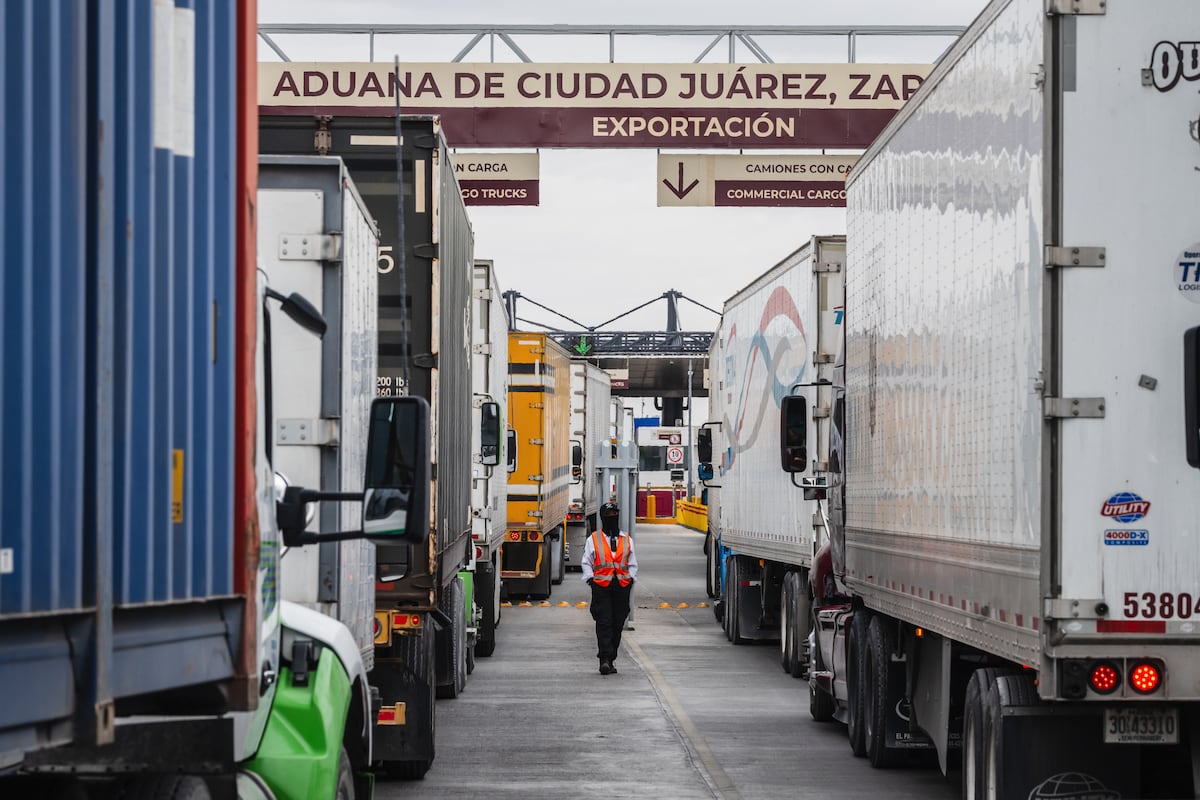NIOSH staffing Cuts Spark Outcry: Impact on Worker Safety Programs
Table of Contents
- 1. NIOSH staffing Cuts Spark Outcry: Impact on Worker Safety Programs
- 2. Deep cuts at Key Health Agency
- 3. Widespread Criticism from Unions and Workers
- 4. NIOSH: A Historical Perspective
- 5. Potential Ramifications and Future Outlook
- 6. What actions should be taken by individuals or workers to express their concerns about the NIOSH staffing cuts?
- 7. Interview: Impact of NIOSH Staffing Cuts on Worker Safety
- 8. The Scope of the Cuts
- 9. specific Programs at Risk
- 10. the Broader Implications
- 11. Looking Ahead
Government downsizing at the national Institute for Occupational Safety and Health (NIOSH) raises concerns about worker protection across the U.S.
Deep cuts at Key Health Agency
NEW YORK – Important staffing reductions at the National Institute for Occupational Safety and Health (NIOSH), a critical U.S. health agency dedicated to safeguarding workers, have triggered widespread condemnation.Firefighters, coal miners, medical equipment manufacturers, and numerous other stakeholders are voicing strong objections to the cuts.
Based in Cincinnati, NIOSH operates as part of the Centers for Disease Control and Prevention (CDC). According to estimates from a union representative and affected employees, the agency is set to lose approximately 850 out of its roughly 1,000 employees. Among those impacted was its director, Dr. John Howard, who had served in the role across three previous presidential administrations.
These layoffs are causing delays and could potentially terminate various vital programs, including a firefighter cancer registry and a crucial laboratory responsible for certifying respirators used across numerous industries.
The cuts are “a very pointed attack on workers in this contry,”
Micah Niemeier-Walsh,vice president of the union local representing NIOSH employees in Cincinnati.
Widespread Criticism from Unions and Workers
unions representing a diverse range of professions, including miners, nurses, and flight attendants, have voiced strong disapproval of the cuts. They argue that these reductions will impede the identification and prevention of workplace hazards. Protests in Cincinnati and other cities have attracted not only laid-off CDC employees but also members of unions representing teachers,postal workers,and bricklayers. “These workforce reductions will compromise workplace safety across various industries.”
The impact of these cuts extends beyond specific industries, potentially affecting the broader U.S. economy. Such as,delays in respirator certifications could disrupt supply chains,impacting industries relying on personal protective equipment,from healthcare to construction.
Andrew Ansbro, president of a union representing New York City firefighters, emphasized the critical role NIOSH doctors play in reviewing and certifying that 9/11 first responders who have developed chronic illnesses are eligible for care under the federal government’s World Trade Center Health Program.
Dismantling NIOSH dishonors the memory of our fallen brothers and sisters and abandons those still battling 9/11-related illnesses,
Andrew Ansbro, president of a union representing New York City firefighters.
The potential ramifications for 9/11 first responders are particularly alarming, potentially jeopardizing the healthcare and support they desperately need. It raises questions about the nationS commitment to those who risked thier lives during a national tragedy. This is especially relevant considering recent Congressional debates over funding for the World Trade Center Health program.
NIOSH: A Historical Perspective
NIOSH was established under a 1970 law signed by President Richard Nixon. It commenced operations the following year and expanded to include offices and labs in eight cities, including Spokane. NIOSH’s creation marked a significant step forward in prioritizing worker safety and health in the U.S.
The agency’s work has been instrumental in identifying workplace hazards, developing safety protocols, and promoting healthier working conditions across various industries. The current cuts represent a potential setback to decades of progress in occupational safety and health.
Potential Ramifications and Future Outlook
The impact of these cuts could be far-reaching. Experts warn of potential increases in workplace accidents and illnesses, and also a slowdown in the development of new safety technologies and protocols. The long-term effects on worker health and the U.S. economy remain uncertain.
Advocates for worker safety are calling on Congress to restore funding to NIOSH and ensure the agency has the resources it needs to protect American workers. The debate over NIOSH’s future is likely to continue in the coming months,with significant implications for the safety and well-being of workers across the country.
The cuts at NIOSH also raise broader questions about the role of government in protecting workers and the balance between economic considerations and worker safety. As technology continues to evolve and new industries emerge, the need for a strong and well-funded NIOSH will only grow. The future of worker safety in the U.S. may very well hinge on the outcome of this debate.
What actions should be taken by individuals or workers to express their concerns about the NIOSH staffing cuts?
Interview: Impact of NIOSH Staffing Cuts on Worker Safety
Archyde News: Welcome. today, we have Dr. Emily Carter, a leading occupational health expert, to discuss the recent cuts at the National Institute for Occupational Safety and Health (NIOSH) and their potential impact on worker safety nationwide. Dr.Carter,thank you for joining us.
Dr. Carter: Thank you for having me. It’s crucial to address this very serious situation.
The Scope of the Cuts
Archyde News: Dr. Carter, could you provide some context on the scale of these layoffs at NIOSH? We understand a important number of positions are being eliminated.
Dr. Carter: Absolutely. Reports indicate that approximately 850 employees are losing their jobs. This is a substantial reduction, impacting nearly all aspects of NIOSH’s work, from research to program management.This scale of reduction could perhaps cripple several critical worker safety projects. I’m particularly concerned about the firefighter cancer registry and the respirator certification laboratory.
specific Programs at Risk
Archyde News: Can you elaborate on the specific programs that are most vulnerable due to these cuts?
Dr. Carter: Certainly. The firefighter cancer registry is vital for tracking and understanding cancer rates among firefighters, leading to better prevention strategies. The respirator certification lab ensures the equipment used by workers in hazardous environments across many different industries like healthcare, construction, and mining, meets rigorous safety standards to protect against many different harmful exposures. Delays in certification, or even the cessation of such a critical program, would put countless workers at risk.
the Broader Implications
Archyde News: What are the wider implications of these cuts for worker safety on a national level?
Dr. Carter: The ramifications are far-reaching. Fewer resources mean less capacity for research into workplace hazards, fewer inspections, and a potential slowdown in developing new safety protocols. This could lead to increased workplace accidents, illnesses, and a decline in overall worker well-being. The cuts directly impact industries relying on personal protective equipment.
Archyde News: Some unions have voiced strong criticism. What is the essence of their concerns?
Dr. Carter: Unions are very concerned, and rightfully so.They represent various professions at risk, including miners, nurses, and flight attendants. The unions have pointed out that the reduced capacity of NIOSH will hinder their ability to prevent workplace hazards and research wich are critical for improving the health and safety for their members.
Looking Ahead
Archyde News: What steps should be taken to mitigate the damage and ensure worker safety remains a priority?
Dr. Carter: The most immediate action is for Congress to restore funding to NIOSH. It’s crucial to ensure that the agency has the necesary resources to continue its crucial work.Furthermore, a thorough review of the impact of these cuts is needed to understand the full scope of the damage and identify areas for immediate intervention.
Archyde News: Dr. Carter, as more and more industries are being developed, the need for a strong and well-funded NIOSH institution sounds more and more critical. Do you think the general public understands the severity of what’s happening at NIOSH?
Dr. Carter: I’m not certain that the general public has a clear understanding. This is such a critical issue, and it affects all of us. Ultimately, the future of worker safety depends on it. I encourage a lot of people to start asking the appropriate questions and demanding more and better protections.
Archyde News: dr. Carter, thank you for sharing your insights. This is a critical moment for worker safety in the U.S. and your outlook is invaluable.
Dr. Carter: Thank you for the possibility to discuss this crucial topic.
Archyde News: And now, we turn to [Host’s name] for a look at how these cuts are unfolding on a state-by-state basis. What do you think actions should be taken by individuals or workers to express their concerns? Let us know in the comments below.







